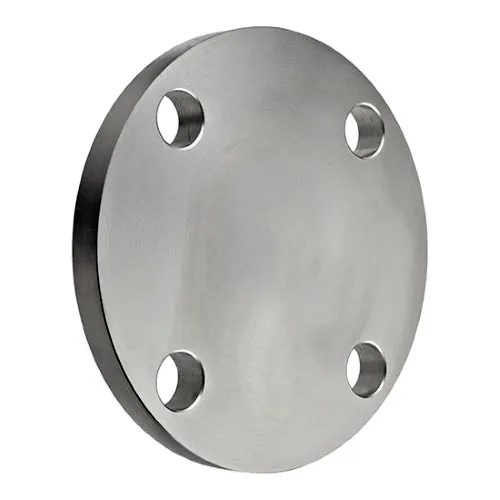-
Cangzhou Yulong Steel Co., Ltd.
-
Phone:
+86 13303177267 -
Email:
admin@ylsteelfittings.com
- English
- Arabic
- Italian
- Spanish
- Portuguese
- German
- kazakh
- Persian
- Greek
- French
- Russian
- Polish
- Thai
- Indonesian
- Vietnamese
- Zulu
- Korean
- Uzbek
- Hindi
- Serbian
- Malay
- Ukrainian
- Gujarati
- Haitian Creole
- hausa
- hawaiian
- Hebrew
- Miao
- Hungarian
- Icelandic
- igbo
- irish
- Japanese
- Javanese
- Kannada
- Khmer
- Rwandese
- Afrikaans
- Albanian
- Amharic
- Armenian
- Azerbaijani
- Basque
- Belarusian
- Bengali
- Bosnian
- Bulgarian
- Catalan
- Cebuano
- China
- China (Taiwan)
- Corsican
- Croatian
- Czech
- Danish
- Esperanto
- Estonian
- Finnish
- Frisian
- Galician
- Georgian
- Kurdish
- Kyrgyz
- Lao
- Latin
- Latvian
- Lithuanian
- Luxembourgish
- Macedonian
- Malgashi
- Malayalam
- Maltese
- Maori
- Marathi
- Mongolian
- Myanmar
- Nepali
- Norwegian
- Norwegian
- Occitan
- Pashto
- Dutch
- Punjabi
- Romanian
- Samoan
- Scottish Gaelic
- Sesotho
- Shona
- Sindhi
- Sinhala
- Slovak
- Slovenian
- Somali
- Sundanese
- Swahili
- Swedish
- Tagalog
- Tajik
- Tamil
- Tatar
- Telugu
- Turkish
- Turkmen
- Urdu
- Uighur
- Welsh
- Bantu
- Yiddish
- Yoruba

Oct . 10, 2024 19:42 Back to list
steel mandrel bends
Understanding Steel Mandrel Bends A Comprehensive Guide
In the world of metalworking and fabrication, the bending of steel pipes and tubes is a fundamental process that plays a crucial role in various industries, including automotive, construction, and manufacturing. One of the most effective methods for achieving precise bends is through the use of steel mandrel bends. This article delves into the concept, benefits, applications, and techniques associated with steel mandrel bending.
What are Steel Mandrel Bends?
Steel mandrel bends refer to a specific type of pipe or tube bending technique that employs a mandrel—a device inserted inside the tube or pipe—during the bending process. The primary purpose of the mandrel is to provide internal support, which helps maintain the shape of the pipe or tube and prevents deformation or kinking, which can occur during conventional bending methods.
The mandrel is typically made of steel or another durable material, and it comes in various shapes and sizes to accommodate different diameters and wall thicknesses of the pipes being bent. This method is particularly advantageous for bending tighter radii without sacrificing the integrity or flow capabilities of the pipe.
Benefits of Steel Mandrel Bends
1. Precision and Consistency One of the major advantages of using a mandrel during the bending process is the high level of precision it provides. The mandrel supports the interior walls of the pipe, ensuring that each bend is consistent and matches specified angles and radii closely.
2. Reduced Risk of Deformation Traditional bending techniques can lead to issues like ovalization, kinking, or collapsing of the pipe walls. The use of a mandrel significantly minimizes these risks, allowing for smoother bends that maintain the structural integrity of the material.
3. Improved Flow Characteristics For applications that require fluid or gas transportation, such as in plumbing or exhaust systems, maintaining a smooth interior surface is crucial. Mandrel bending enhances these flow characteristics, reducing turbulence and enhancing performance.
4. Versatility Steel mandrel bending is versatile and can be applied to a variety of materials, including stainless steel, aluminum, and carbon steel. It is suitable for different applications, offering a range of bending angles and radii.
5. Enhanced Aesthetic Appeal For industries where aesthetics are a concern, such as automotive customizations, mandrel bending allows for cleaner, more attractive curves compared to other methods that may leave unsightly marks or distortions.
steel mandrel bends

Applications of Steel Mandrel Bending
Steel mandrel bends are predominantly used in several industries, including
1. Automotive In the automotive sector, mandrel bending is often used to create exhaust systems and custom roll cages. The method allows for tight bends necessary to navigate the complex spatial arrangements often found in vehicles.
2. Construction Structural applications often require efficiently bent steel pipes for handrails, supports, and other design elements. Mandrel bending ensures strength and durability while providing the required aesthetic.
3. Manufacturing Many manufacturing processes that require tubing for product assembly benefit from mandrel bending. This includes refrigeration lines, medical devices, and furniture elements.
4. Aerospace The aerospace industry often requires precise and lightweight components, making mandrel bends ideal for fuel lines, hydraulic systems, and structural components.
Techniques and Considerations
When utilizing steel mandrel bending, several factors should be considered
- Material Thickness The wall thickness of the pipe affects the bending process, as thicker materials may require different equipment settings. - Bend Radius The desired bend radius is crucial for determining the type of mandrel and bending method to be used.
- Bending Equipment Various bending machines are available, and selecting the right one depends on the size and type of the material, desired bend angle, and production volume.
In conclusion, steel mandrel bends are an indispensable technique in metalworking that yields precise, high-quality bends while preserving the mechanical properties of the material. Its applications span numerous industries, making it a vital process for fabricators and manufacturers alike. Understanding this method enhances the ability to create efficient, reliable, and aesthetically pleasing designs in metal fabrication.
Latest news
-
ANSI 150P SS304 SO FLANGE
NewsFeb.14,2025
-
ASTM A333GR6 STEEL PIPE
NewsJan.20,2025
-
ANSI B16.5 WELDING NECK FLANGE
NewsJan.15,2026
-
ANSI B16.5 SLIP-ON FLANGE
NewsApr.19,2024
-
SABS 1123 FLANGE
NewsJan.15,2025
-
DIN86044 PLATE FLANGE
NewsApr.19,2024
-
DIN2527 BLIND FLANGE
NewsApr.12,2024
-
JIS B2311 Butt-Welding Fittings LR/SR 45°/90° /180°Seamless/Weld
NewsApr.23,2024











